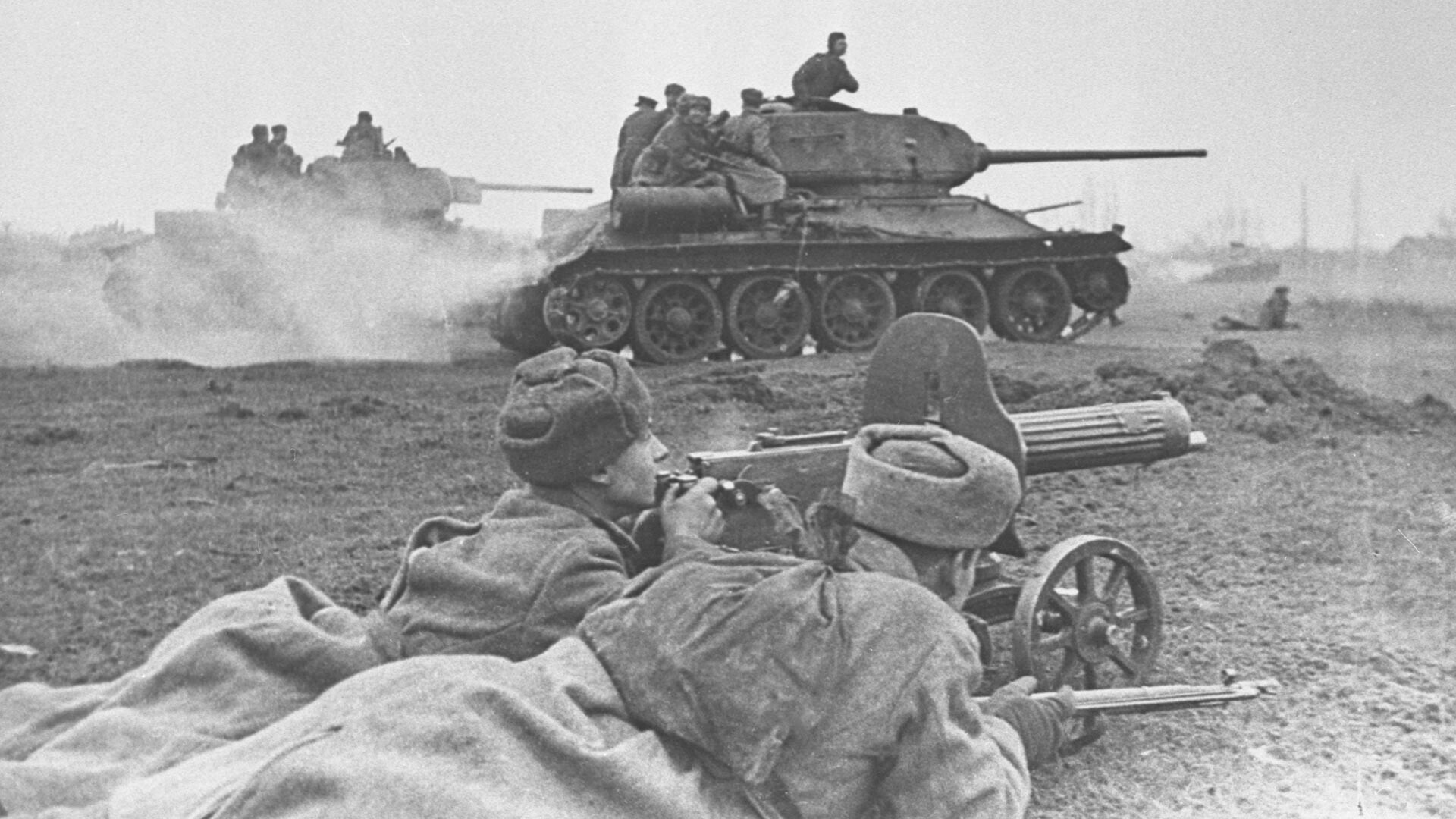
The Budapest Operation of the Soviet troops.
SputnikHaving won the Battle of Kursk in the Summer of 1943, the Red Army firmly seized the strategic initiative in the war. By the end of the year, it had managed to liberate almost the whole of left-bank Ukraine and enter Byelorussia. The German 17th Army in Crimea found itself completely cut off from the main forces by land.
The worst state of affairs was in the northwest of the country. Despite the fact that the siege of Leningrad had been broken as early as January 18, 1943, it was so far proving impossible to push back and destroy the troops of Army Group North.
“During this period, our Soviet military cadres improved considerably,” Marshal Aleksandr Vasilevsky wrote in his memoirs ‘The Cause of My Whole Life’. “They had gained a wealth of new experience in the strategic, operational and tactical art of war and learned to defeat the enemy more effectively with the least losses. All this not only provided us with the opportunity, but also obliged us to launch extensive offensive operations on the entire front from Leningrad to the Black Sea to liberate all Soviet territory from the enemy as soon as possible…”
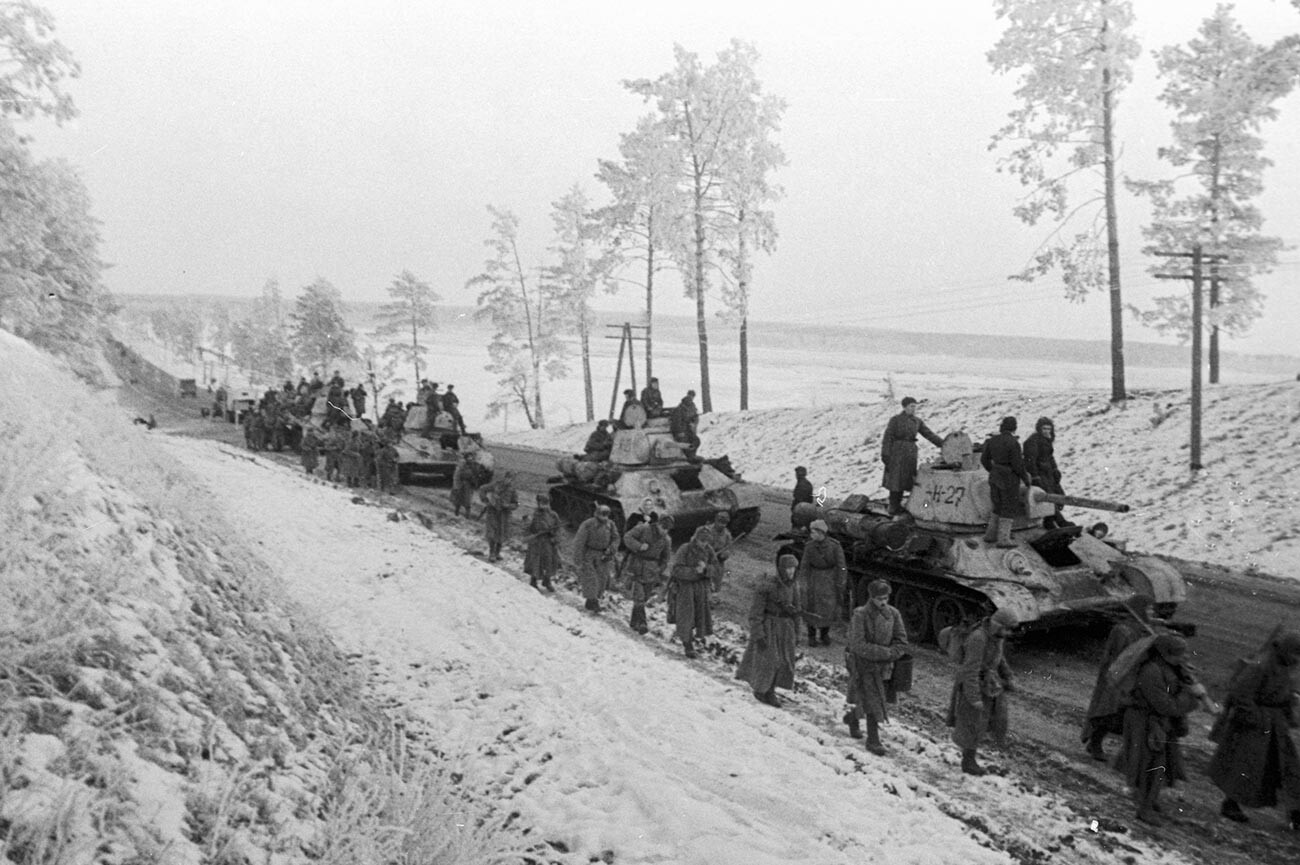
Soviet troops pursuing Nazis on Ukrainian territory after liberation of Kiev.
Oleg Knorring/SputnikThe battle for right-bank Ukraine began at the end of December and lasted until the Spring of 1944. It involved the forces of five Soviet fronts and two German army groups, with a total numerical strength of about four million men.
Massive strikes in several directions, large-scale use of aviation, rapid and well-supported advances and competent use of tank armies in the breakthrough areas allowed Soviet troops to successfully overcome the enemy defenses and, in some places, even to ensnare large German formations in pincer movements. Thus, in the Korsun-Cherkassy “pocket”, which became known as the ‘Second Stalingrad’, two enemy army corps were destroyed. “There, the Germans were breaking out in columns and we were crushing them under our tank tracks…” recalled tank crewman Nikolai Orlov.
As a result of the Soviet offensive, troops of Army Group South and Army Group Center suffered a heavy defeat and their commanders, Generalfeldmarschall Erich von Manstein and Generalfeldmarschall Ewald von Kleist, were dismissed by Hitler. On March 26, the Red Army reached the USSR state border with Romania. It was symbolic that the first to arrive at the River Prut on the border were soldiers of the 24th border regiment of NKVD troops who, back in June 1941, had been engaged in hard-fought defensive battles there.
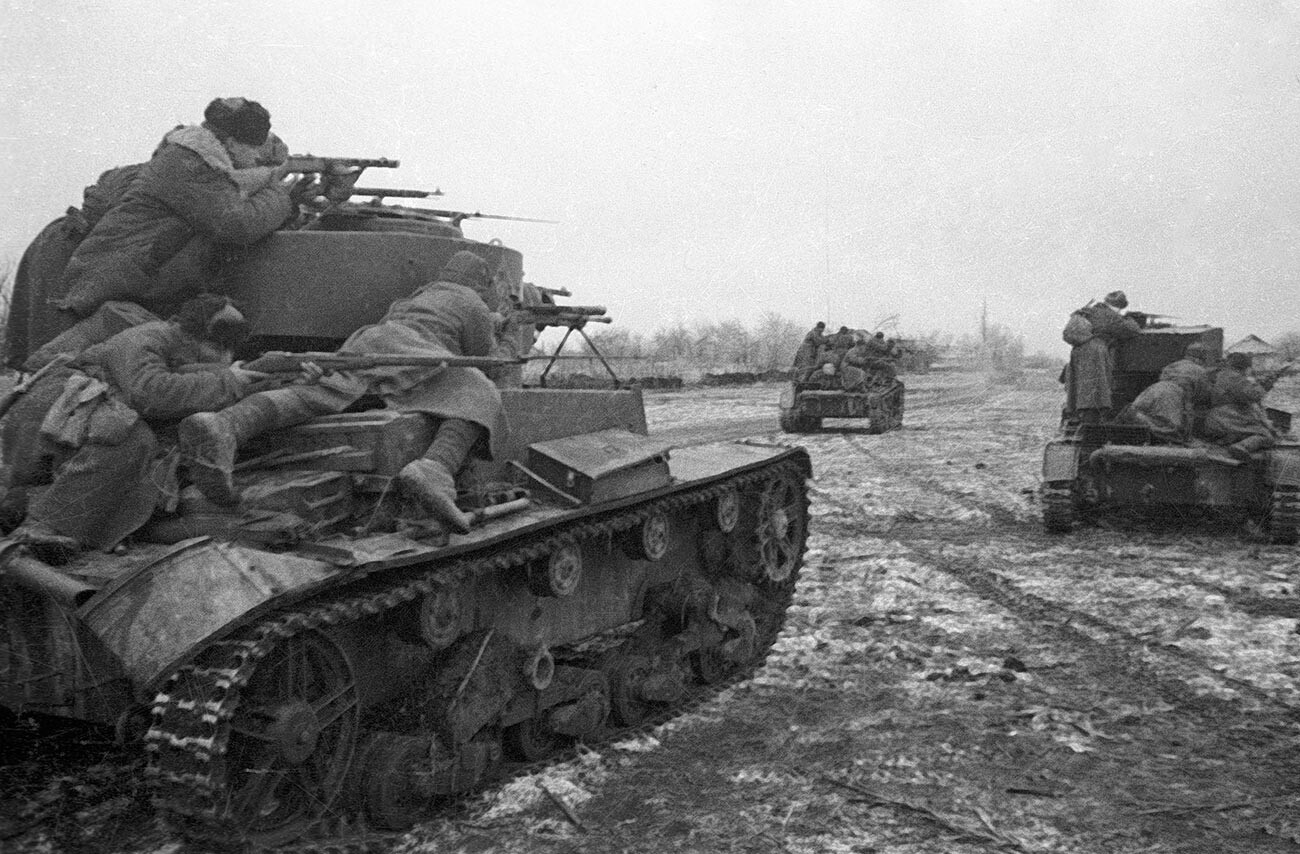
Offensive of the 3rd Ukrainian front units near Kherson.
Vladimir Ivanov/SputnikIn the meantime, after several years of failure, it finally proved possible to make major progress near Leningrad. During the Leningrad-Novgorod offensive, which began on January 14, Soviet forces pushed the Germans 200-280 km back from the country’s second city, forcing them to withdraw to the defensive Panther Line on the border with Estonia. The Red Army’s attempts in the spring to break through the line failed, however.
“The sound of cannons, long familiar but now so joyful, still rumbles on,” is how a Leningrad resident, whose name is unknown, described in her diary entry on January 27 the festive fireworks to celebrate the full lifting of the siege. “The sky is prettily speckled. Our gray misty sky has turned into a dazzlingly beautiful cascade of bright colors - crimson, green, silver. My children are ecstatic. My heart stops, my hands tremble. Can it be true? Is it really all over? The whole hellish nightmare of our existence? Is it really over?”
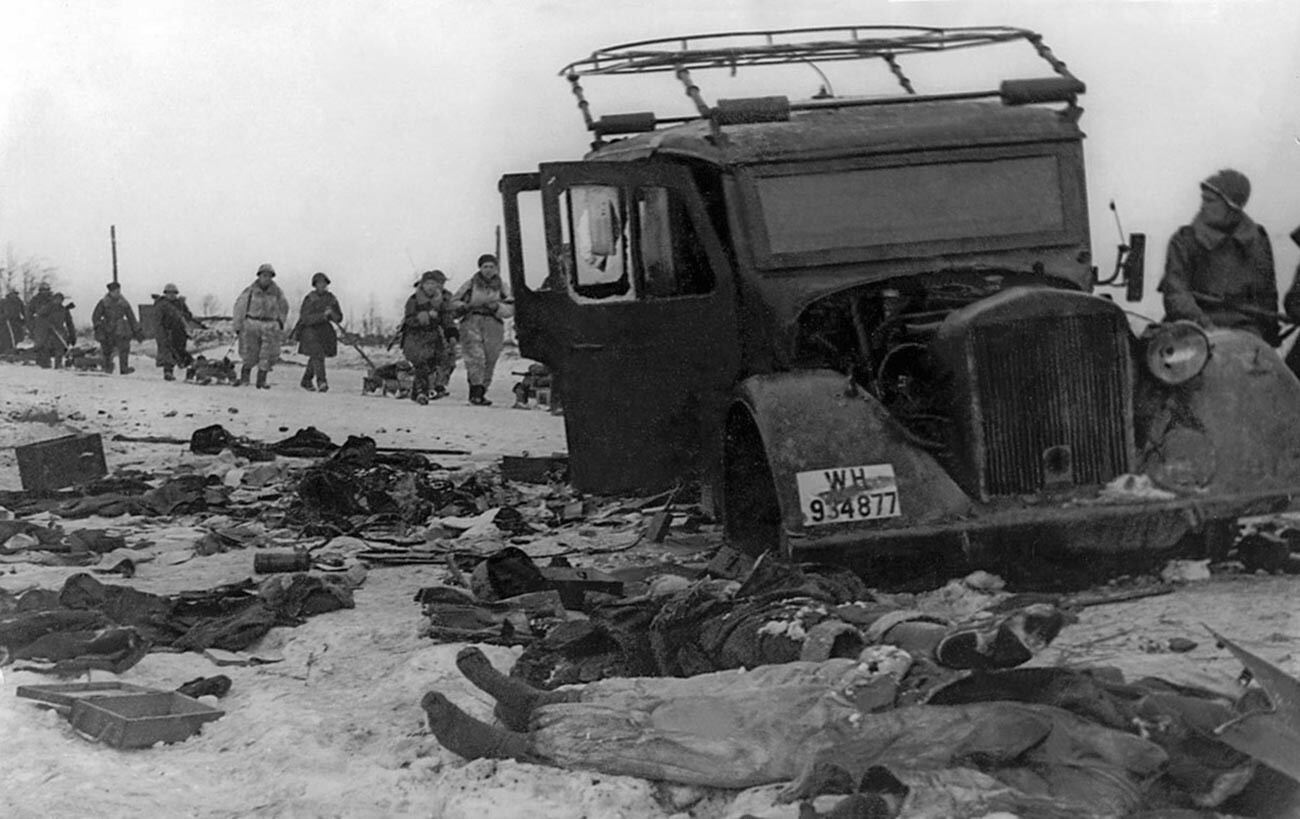
Destroyed German vehicle near Leningrad.
Rafail Mazelev/State History Museum of South Ural/russiainphoto.ruAfter the Red Army’s rapid breakthrough to right-bank Ukraine the German command’s hopes of re-establishing land links with Crimea crumbled for good. It took the Soviet troops a little over a month to fully liberate the peninsula, recover the Black Sea Fleet’s main base in Sevastopol and, by early May, to defeat the Wehrmacht’s 17th Army, which had never succeeded in completing its evacuation by sea.
“From a bird’s eye view, Chersonesos looked like a giant cemetery of equipment that seemed to have been crushed by the enormous grindstones of a huge mill,” recalled Mikhail Avdeyev, commander of the 6th Guards Fighter Aviation Regiment of the Black Sea Fleet Air Force. “It looked as if the mangled tanks and guns, broken vehicles and corpses of soldiers and officers in mouse-gray uniforms had been dumped there from all the battlefields of the great war.”
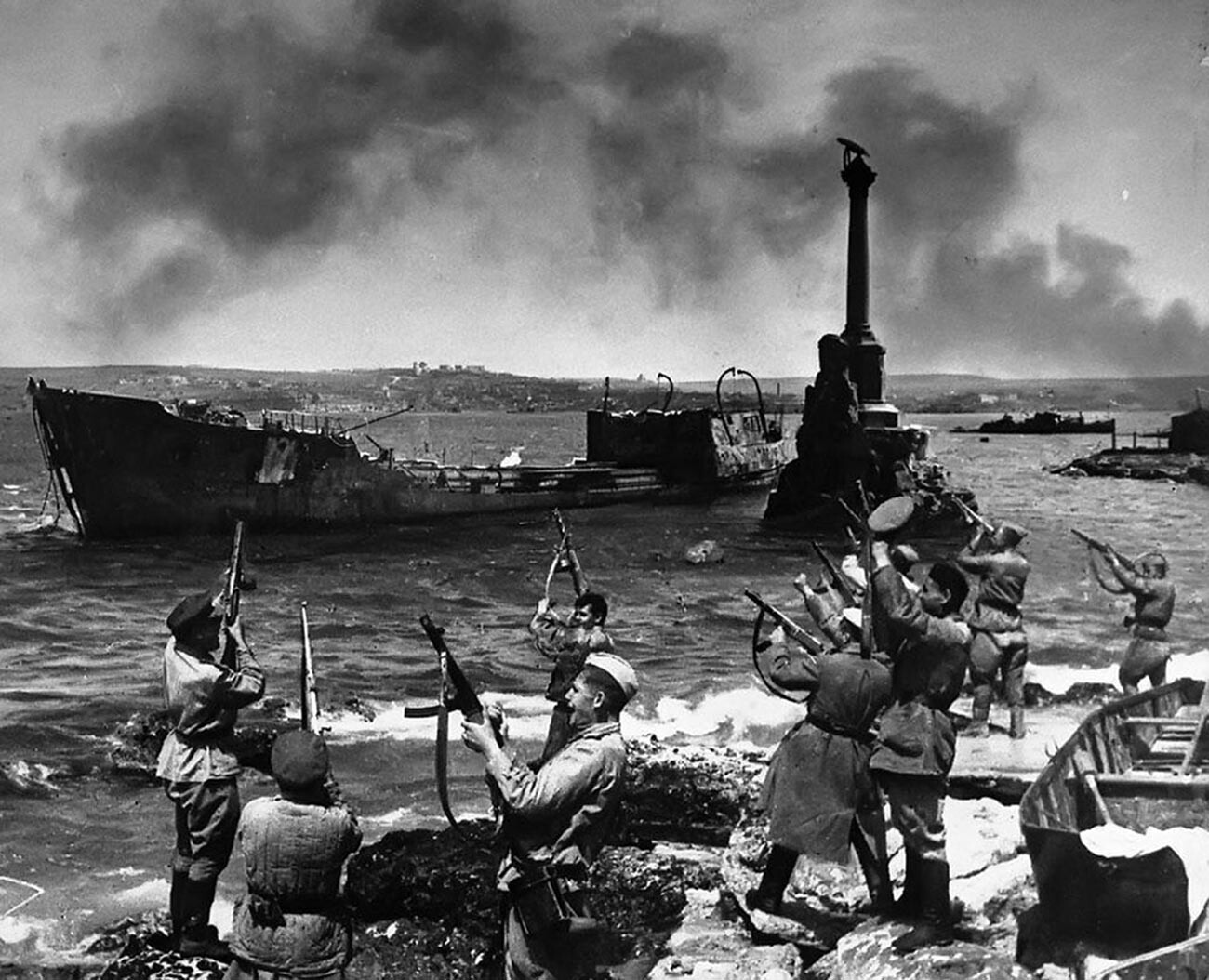
Liberated Sevastopol.
The Ministry of Defense of the Russian FederationIn the Summer of 1944, the Red Army demonstrated to the Wehrmacht that it had learned the bitter lessons of 1941 well and could now effectively apply the blitzkrieg strategy itself. On June 23, almost three years to the day after the beginning of the German invasion of the USSR, the Byelorussian offensive operation, also known as ‘Operation Bagration’, began.
Powerful strikes by Soviet troops almost immediately broke the defenses of the enemy, which had expected the Red Army to launch its main offensive in Ukraine. Large tank units and formations immediately surged through the newly-formed openings, gaining momentum. The pace of the Soviet offensive reached 25 km a day.
Ground attack planes delivered massive non-stop strikes on river crossings and columns of retreating German troops, giving them neither the time nor the opportunity to regroup or gain a foothold in new defensive positions. Simultaneously, partisan detachments stepped up their operations behind enemy lines.
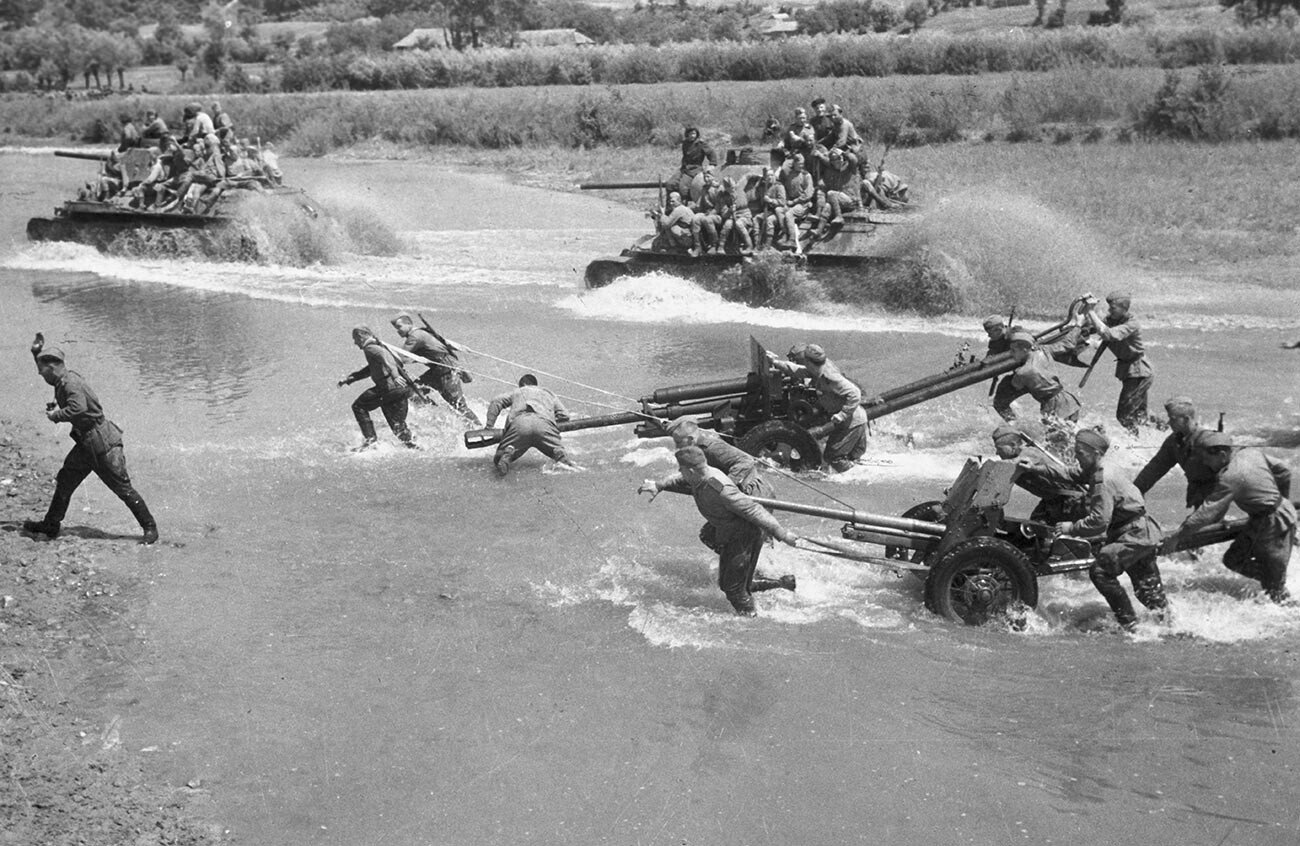
Soviet troops crossing a river.
Maks Alpert/Sputnik“In the Byelorussian operation, the ability to rapidly encircle and destroy large groupings of enemy troops which had been developed by Soviet commanders of all levels was on display in the fullest measure. This generalship and the skill and boldness of the troops led to the crushing of the biggest German grouping on the Berlin strategic axis of advance,” Marshal Georgy Zhukov noted in his ‘Reminiscences and Reflections’.
More than 10 German divisions were smashed in “pockets” near Bobruisk and Vitebsk. The Wehrmacht’s 100,000-strong 4th Army was surrounded near Minsk and almost completely eliminated.
In ‘Operation Bagration’, the Red Army destroyed 17 German divisions and three brigades, while another 50 divisions lost more than half their numerical strength and were effectively deprived of their combat capability. Total German losses amounted to around half a million soldiers. The number of killed and missing among Soviet troops exceeded 178,000, with another 587,000 wounded. “The end is drawing near… Only the scattered remains of 30 divisions have evaded destruction or Soviet captivity,” is how General Siegfried Westphal described the defeat of Army Group Center during Operation Bagration.
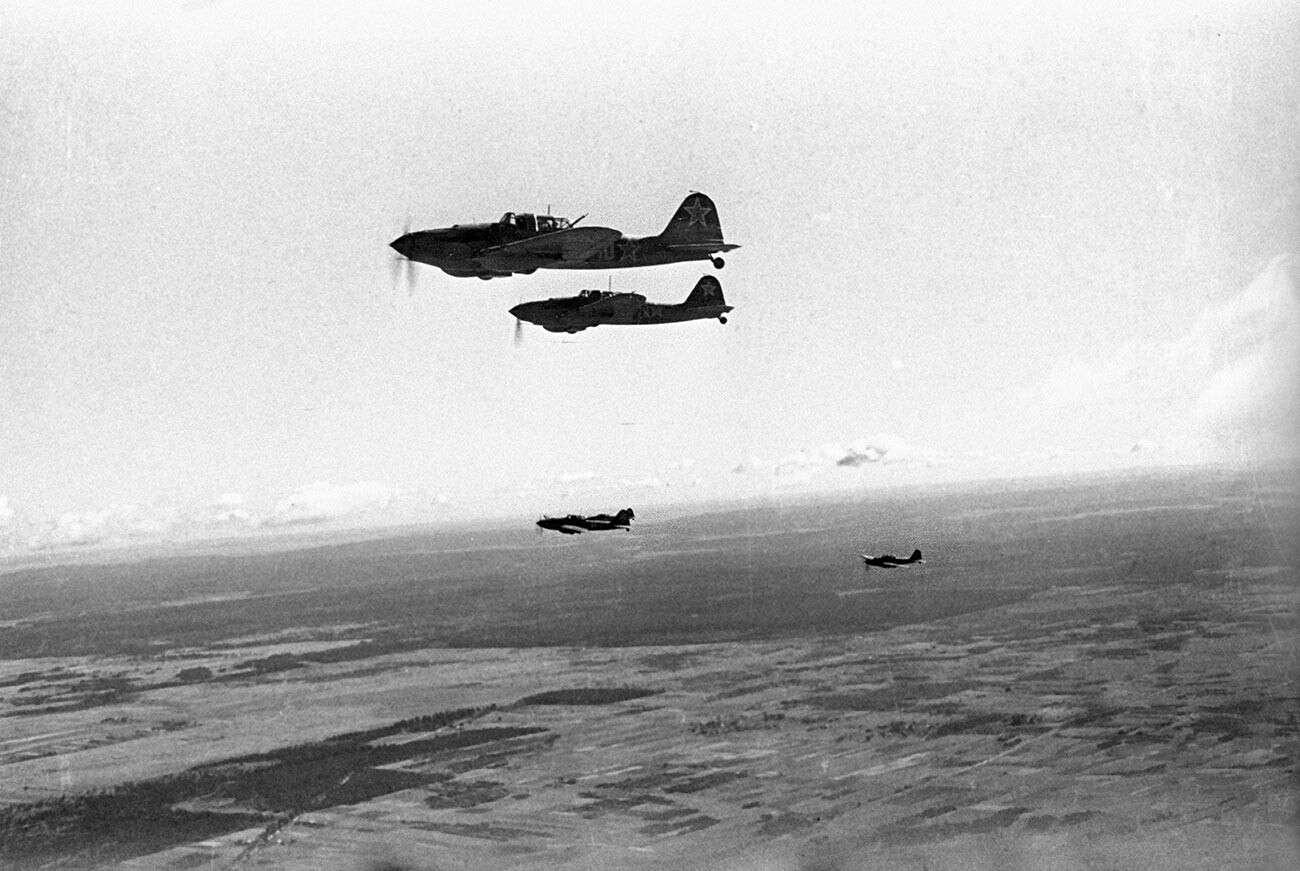
Soviet Il-2 ground-attack planes during the ‘Operation Bagration’.
Boris Yaroslavtsev/SputnikIn two months of fighting, the Red Army advanced 550-600 km westwards. After liberating the whole of Byelorussia and a considerable part of eastern Poland, in August Soviet troops reached the approaches to Warsaw and the borders of East Prussia, after which they called a temporary operational halt.
Even before the completion of the operation, 57,000 German officers and men taken prisoner in ‘Operation Bagration’ were, on July 17, led through the streets of Moscow. Leonid Leonov was an eyewitness of this “March of the Vanquished”. “A fastidious silence reigned in the streets of Moscow, where the air was filled with the shuffling of… thousands of feet. Only occasionally, the calm, measured voices of people thinking aloud reached us from behind: ‘So, you dogs, you thought you could trample the Russians into submission!’… There were also a lot of ‘flattering’ words spoken about Hitler and Fascism, in general. And some phrases of ‘greeting’ were also addressed directly to the participants in the ‘parade’: ‘Drop dead, you scum!’ and ‘Why didn’t they finish you off at the front?’”
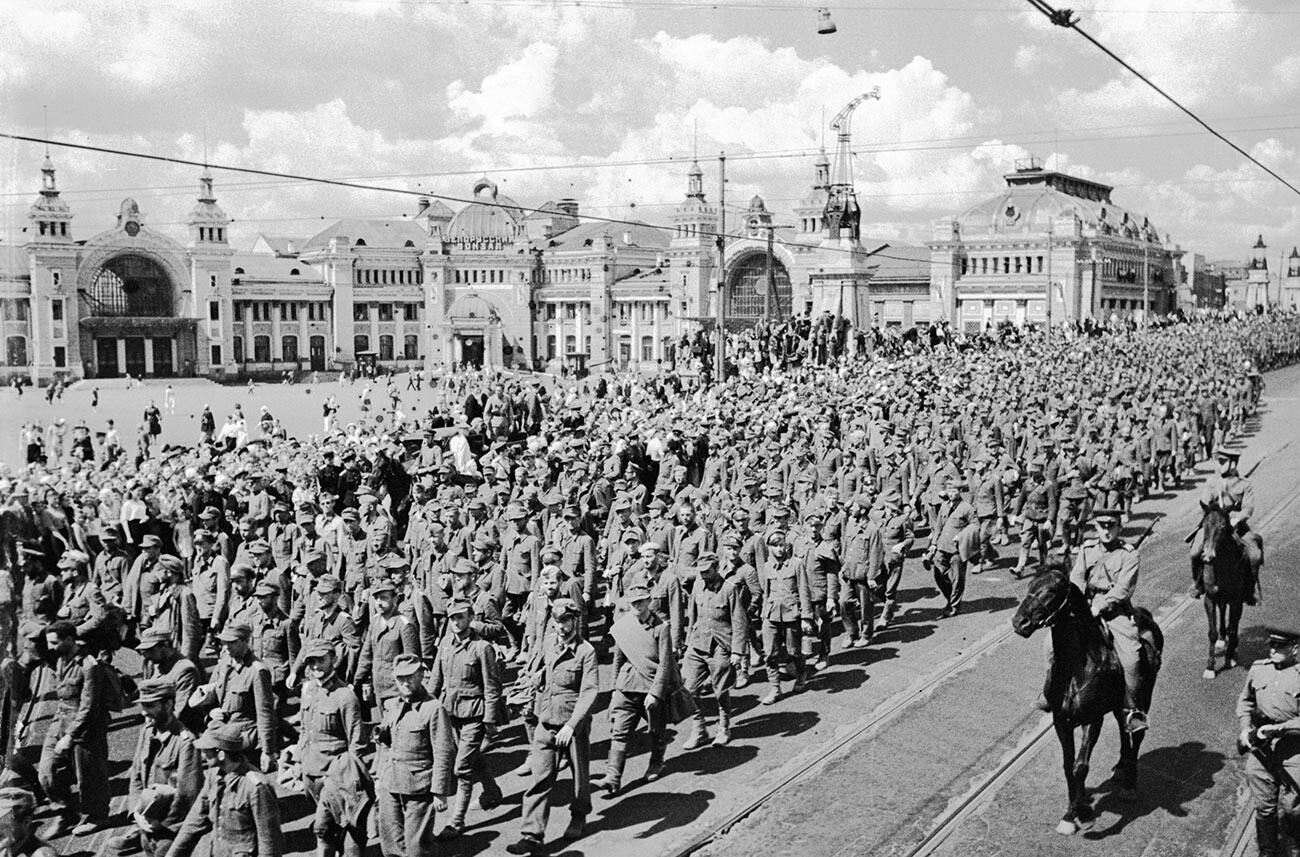
German POW march in Moscow, July 17, 1944.
Mikhail Trachman/SputnikAt the same time, the Red Army command decided to turn its full attention to Finland, which was still occupying part of Soviet Karelia. This had been one of the quietest sectors of the Eastern Front for a long time. There was even a joke doing the rounds about the Soviet troops deployed there: “Only three armies in the world don’t fight - the Swedish army, the Turkish army and the Soviet 23rd Army.”
In the course of several offensives during the summer, the Red Army pushed the Finns back to their pre-war positions. The Moscow Armistice was signed on September 19, in line with which Finland withdrew from the world conflict and undertook to expel all German troops from its territory, something that eventually sparked the so-called Lapland War.
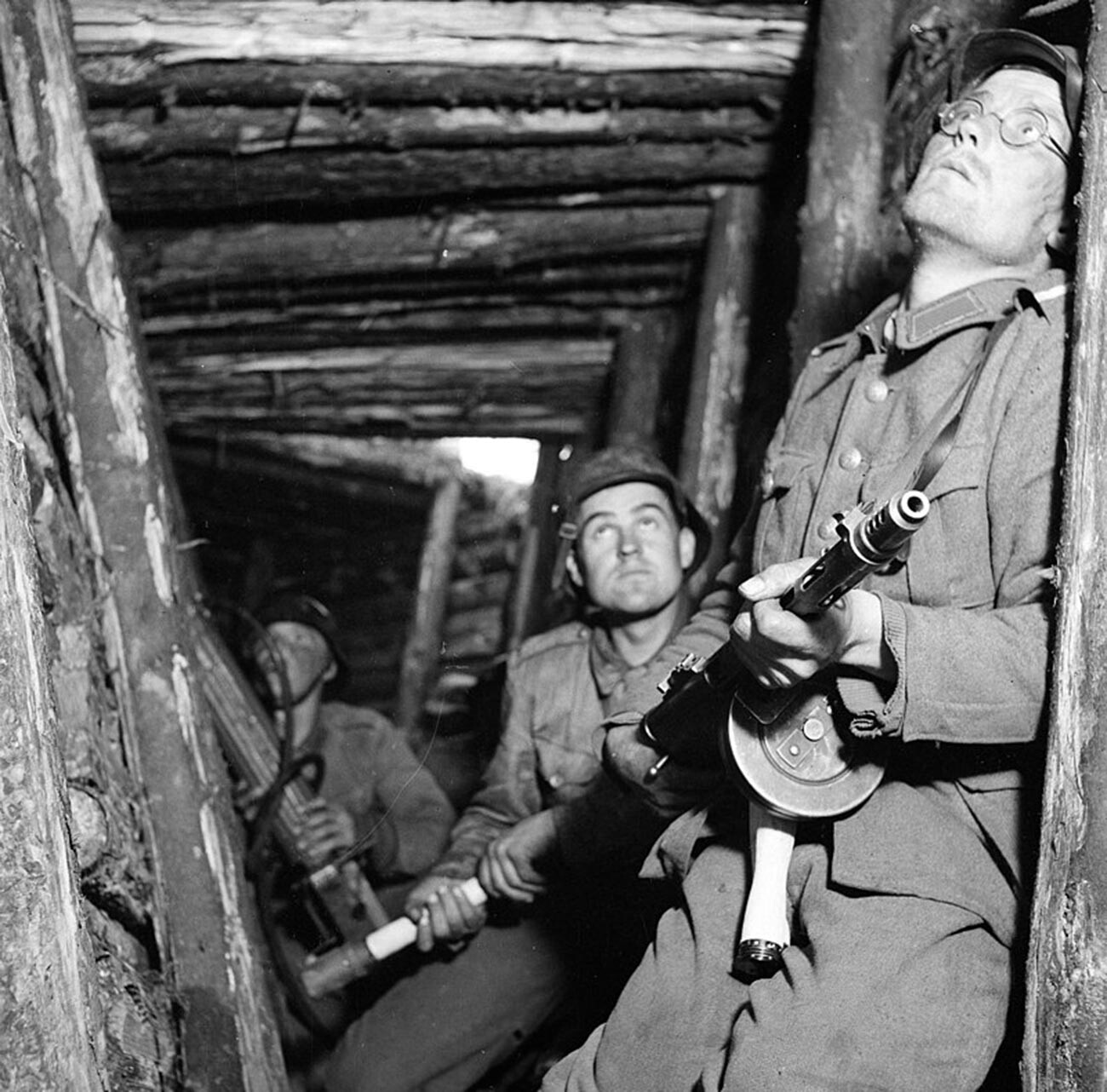
Finnish soldiers in a shelter during an alert.
Public DomainThe Third Reich lost another two allies in southern Europe. On August 20, the Red Army embarked on the ‘Jassy-Kishinev Operation’, in the course of which it inflicted a defeat on the troops of Army Group South Ukraine and proceeded to liberate Moldavia. On August 23, while Soviet troops were fighting their way into Romanian territory, King Michael I and political forces opposed to the Nazis engineered a coup, arresting Conducător (a title equivalent to Fuehrer or Duce) Ion Antonescu, along with members of his government. The Romanian army was then ordered to cease military operations against the Red Army.
“When I woke up on the morning of August 23, I was not certain I would be alive the following day. But, I took a firm decision to withdraw Romania from its alliance with Hitler. Stalin’s armies were at Romania’s door, the front was crumbling and the population was fed up to the back teeth with war,” the king recalled. On August 31, 1944, the Red Army occupied Bucharest without a fight. Romania joined the anti-Hitler coalition and its troops under Soviet command joined in fierce fighting against their former allies.
On September 8, troops of General (from September 12 - Marshal) Fyodor Tolbukhin’s 3rd Ukrainian Front entered Bulgarian territory without meeting any resistance. The country had not declared war on the USSR, but had put its airfields, railways and maritime ports at the disposal of the Germans for their military needs. The countries managed to avoid a direct military confrontation. The Fatherland Front government which had come to power in the country on September 9, following a coup declared war on Germany, and soon the Bulgarian army joined Soviet troops in their campaign to liberate Yugoslavia.
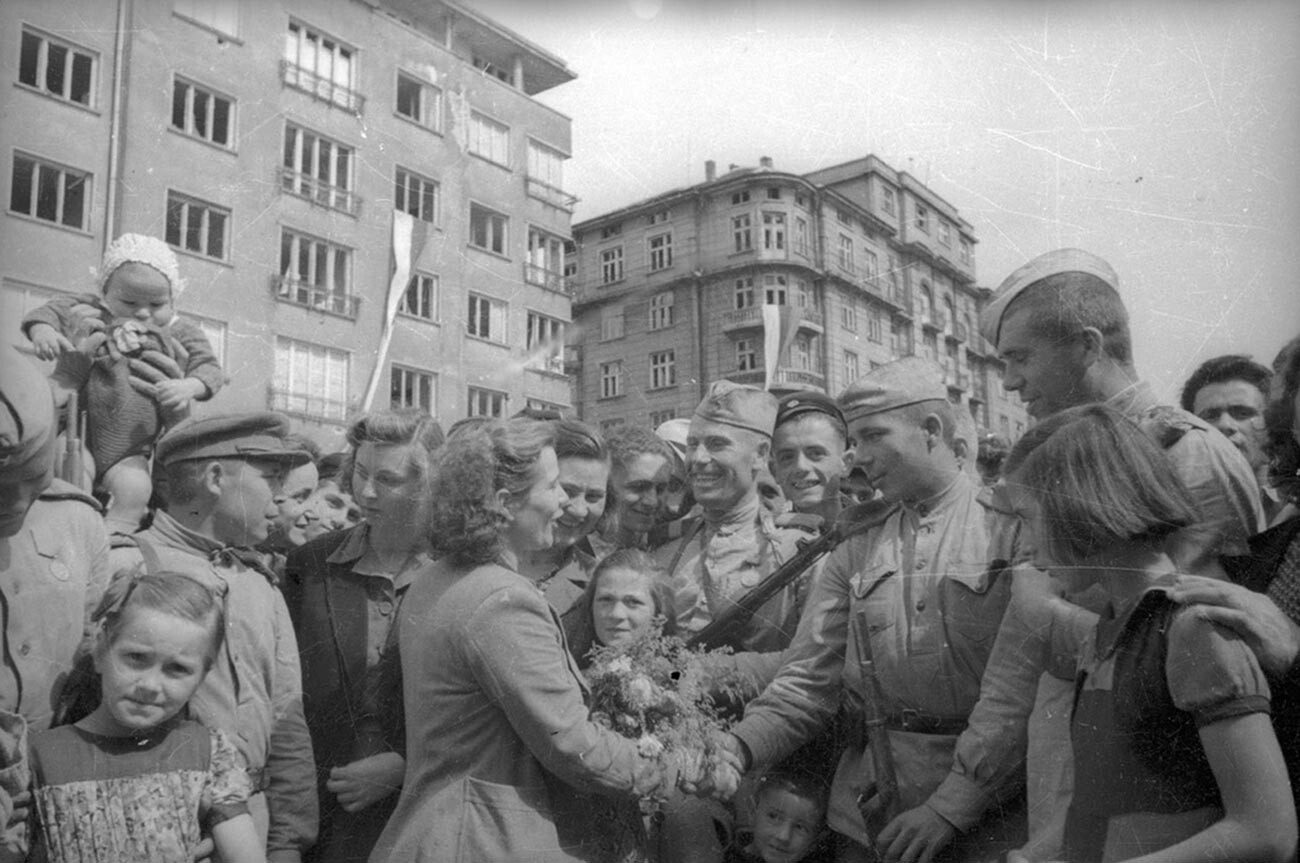
Sofia residents welcome Soviet soldiers.
Evgeny Khaldey/МАММ/МDF/russiainphoto.ruIn October, the Red Army made successful progress in the Arctic from where, for the whole duration of the war, the Wehrmacht had been unable to advance into the interior of the Soviet Union. Pushing the enemy back from Murmansk, Soviet troops drove the Germans out of Petsamo District, which Finland had ceded to the USSR under the terms of the Moscow Armistice and set about the liberation of northern Norway.
“At 09:00 hours on October 25, our forward units fought their way into Kirkenes,” recalled Marshal Kirill Meretskov. “A somber sight greeted them. During their retreat, the Germans had blown up all the port installations and destroyed administrative and residential buildings. Only in some places on the outskirts of the town were some small houses still standing that had miraculously survived. When the firing had died down and silence had returned, the residents of the town started to appear from the caves where they had been forced to shelter from the Fascists. The people of Kirkenes welcomed the Soviet troops joyfully. It was touching to see the usually reserved northerners embracing their liberators with tears in their eyes…”
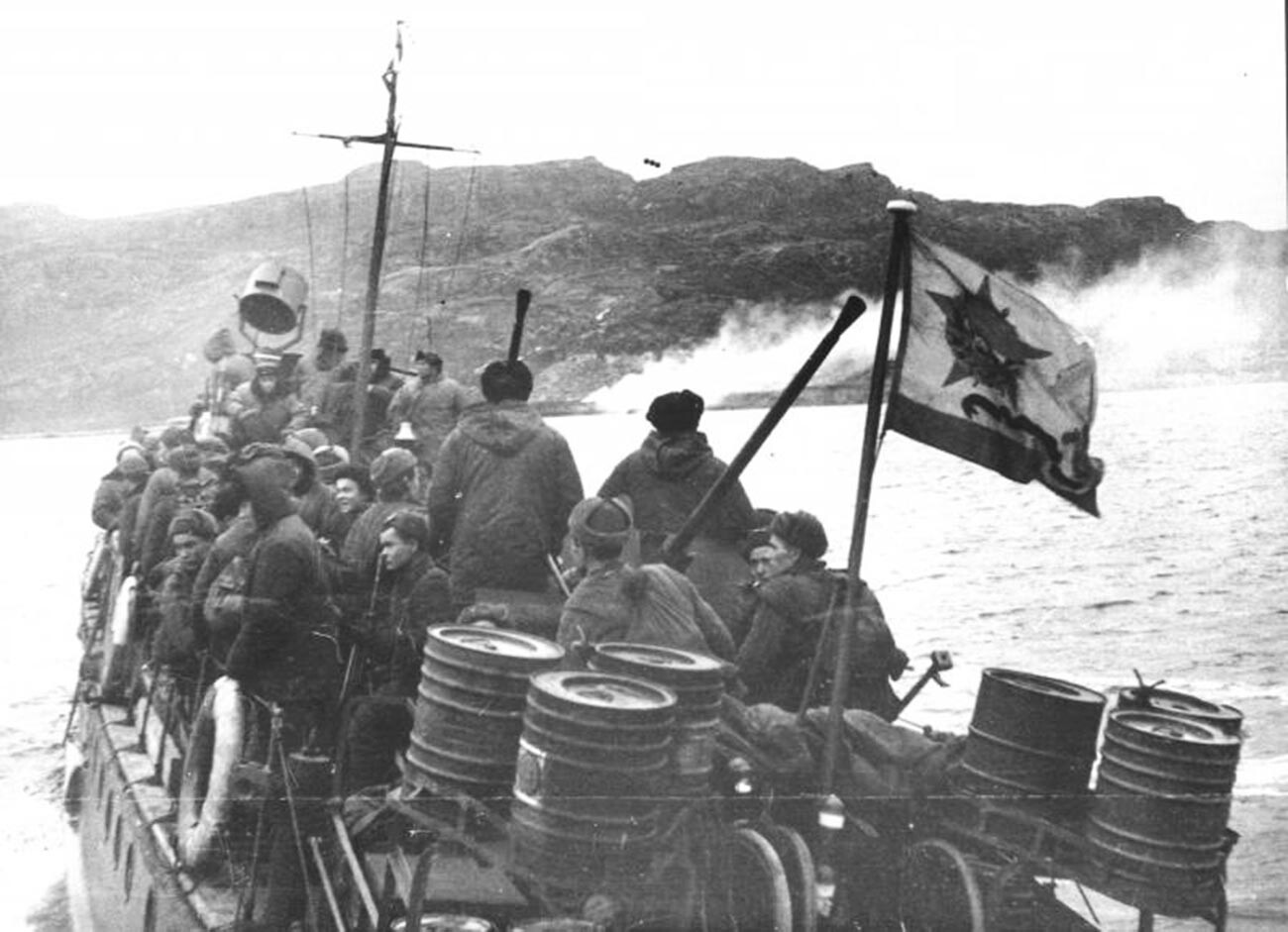
Landing operation in Pechenga.
Robert Diament/МАММ/МDF/russiainphoto.ruAll that fall, there was heavy fighting leading to the liberation of Estonia, almost the whole of Latvia and those parts of Lithuania that were still in enemy hands (the Germans had been driven out of Vilnius and Kaunas in ‘Operation Bagration’ during the summer). On October 10, 1944, units of the Soviet 51st Army reached the shores of the Baltic Sea near the city of Memel (Klaipeda), cutting off the 400,000 soldiers of Army Group North in western Latvia (Courland).
The leadership of Nazi Germany resolved to hold the bridgehead, turning it into an unassailable fortress and intending to supply the troops encircled here by sea. Unsuccessful attempts to break through the German defenses were made right up to the following spring.
“The whole of the ‘Courland pocket’ was rutted with lines of trenches. When we seized one trench, another line would turn out to be situated right behind it and there seemed to be no end of them,” lamented commander of a machine-gun platoon of the 8th Estonian Rifle Corps Mikhail Saltykov.
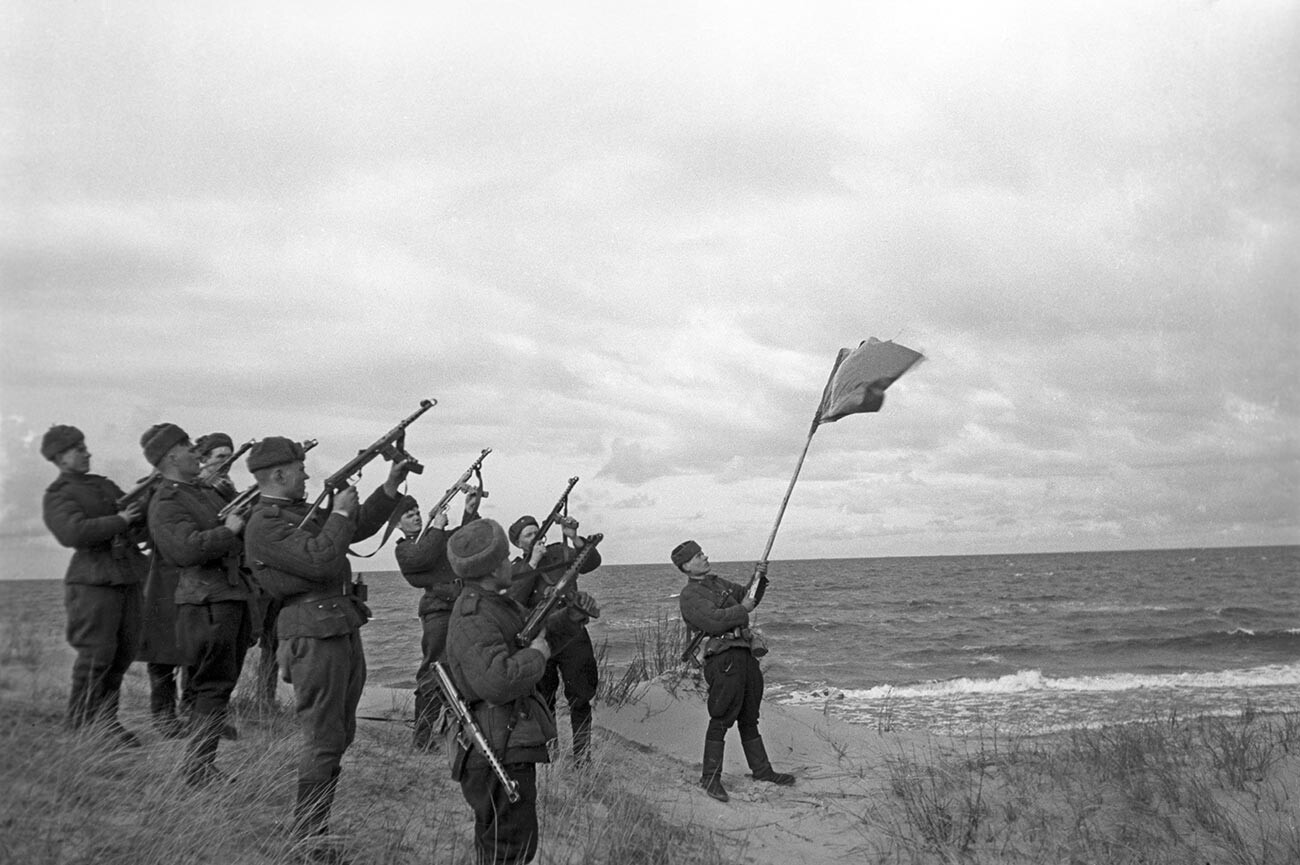
Salute on the occasion of breaking through to the Baltic Sea, October 1944.
Evgeny Kopyt/SputnikWhile the Red Army was not undertaking active operations in Poland and East Prussia and was saving its strength for the winter campaign, in Czechoslovakia and the Balkans, its offensive continued. Aside from newly-acquired allies Romania and Bulgaria, Soviet troops were also getting significant support from the Yugoslav National Liberation Army.
Nazi Germany had only one remaining ally at that point - Hungary, which Hitler wanted to keep at any cost. On December 26, Soviet forces managed to surround a 188,000-strong enemy grouping in Budapest, which turned down an ultimatum to surrender. For all their hopes of a respite, Red Army troops did not manage to see in the New Year in the Hungarian capital quietly. In the very first days of January, they not only had to conduct fierce street fighting to destroy the encircled garrison, but also to repel furious attacks by German forces attempting to lift the blockade of the “pocket” as part of ‘Operation Konrad’.
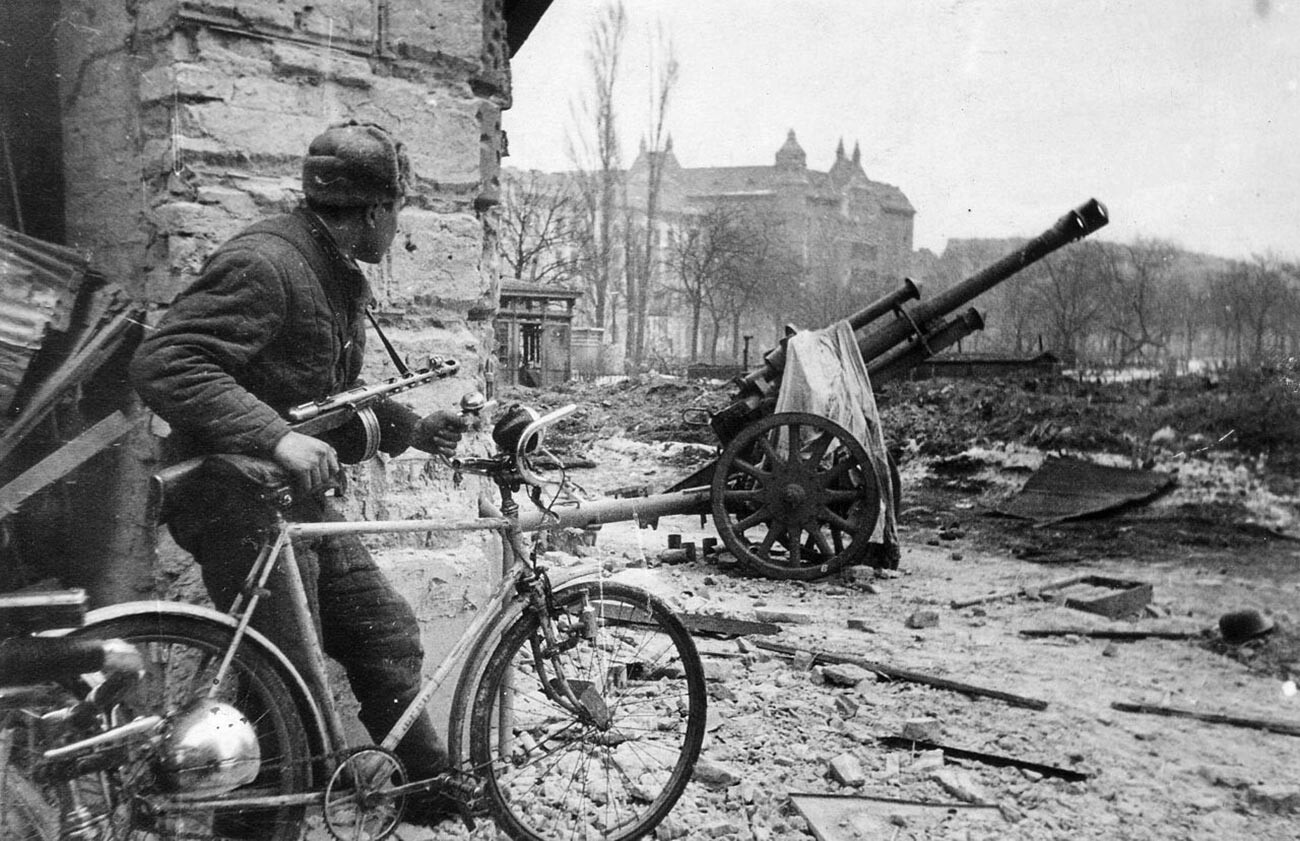
Soviet troops in Budapest.
Public DomainIf using any of Russia Beyond's content, partly or in full, always provide an active hyperlink to the original material.
Subscribe
to our newsletter!
Get the week's best stories straight to your inbox